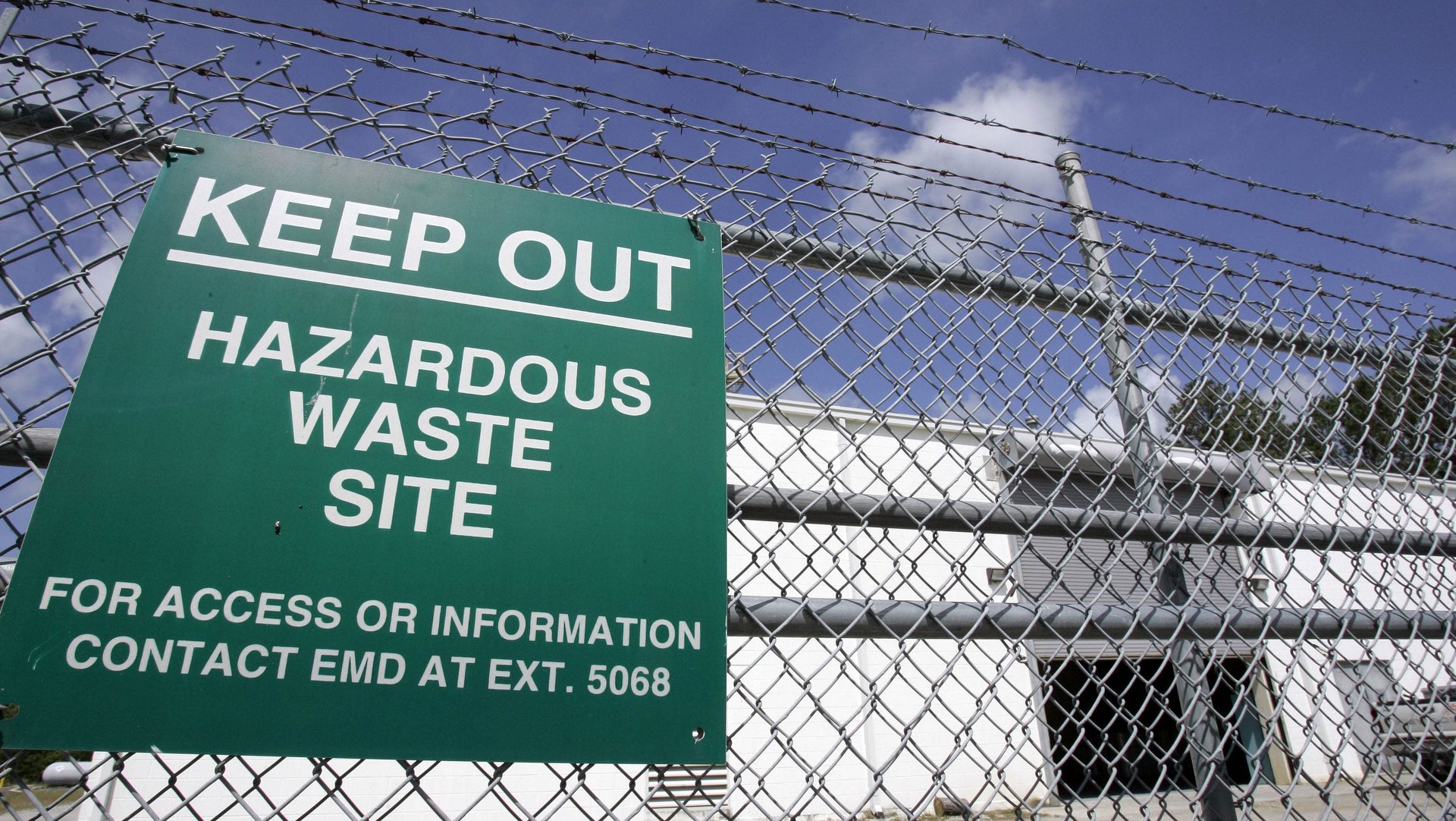Race is the biggest indicator in the US of whether you live near toxic waste
Go looking for the local landfill or toxic waste treatment facility in any US county with a mostly white population, and you’ll likely find it in the black or Latino neighborhoods. That’s because in the US, your race is the single biggest factor that determines whether you live near a hazardous waste facility.


Go looking for the local landfill or toxic waste treatment facility in any US county with a mostly white population, and you’ll likely find it in the black or Latino neighborhoods. That’s because in the US, your race is the single biggest factor that determines whether you live near a hazardous waste facility.
In 2016, a study published in Environmental Research Letters found “a consistent pattern over a 30-year period of placing hazardous waste facilities in neighborhoods where poor people and people of color live.”
“In fact, places that are already disproportionately populated by minorities, and where their numbers are growing, have the best chances of being selected,” Paul Mohai, a professor and the founder of the environmental justice program at the University of Michigan who coauthored the paper, wrote in an email.
The paper followed decades of reports finding much the same: As reported by The Nation, in 1983 the Government Accountability Office found that black people made up the majority of communities near landfills, and a 2007 report, authored by a group of university-affiliated experts in environmental policy and published by the United Church of Christ, found that things had actually gotten worse since the 80s: “[M]any of our communities not only face the same problems they did back then, but now they face new ones because of government cutbacks in enforcement, weakening health protection, and dismantling the environmental justice regulatory apparatus.”
Any remaining environmental justice regulation in the US is likely to be further dismantled in the near future. The Trump administration’s proposed budget for the US Environmental Protection Agency would gut the agency’s environmental justice work by 78%, and likely cut into the EPA’s civil rights office‘s resources, which was set up to handle disparities in geographical distribution of pollution. Mustafa Ali, the head of the environmental justice program at the EPA, has already resigned.
It’s worth pointing out that the EPA’s civil rights office doesn’t exactly have a robust history of reform; the EPA denied 95% of civil rights claims they received since the mid-1990s. When the agency made a formal finding of discrimination on the day before Trump’s inauguration, it was just the second such finding in the office’s history—the first was a preliminary finding in 2011.
Now it appears the federal government will completely take itself out of the business of addressing environmental discrimination.
Living near a hazardous-waste landfill is not just a gross nuisance; it makes you sicker. Air pollution from these sites can lead to a range of health problems.
People of color in the US are also exposed to a 38% higher level of nitrogen dioxide, on average, than white people. Nitrogen dioxide is pumped out of power plants and exhaust pipes on cars and trucks, and is linked to asthma, bronchitis, and a host of other respiratory problems. And when a power plant emits nitrogen dioxide, it likely also emits sulfur dioxide, another respiratory irritant.
Chronic respiratory diseases make daily life harder and shorten life spans. Children are especially susceptible; air pollution exposure has been shown to cause cognitive delays in children, and when expecting mothers are subjected to air pollution, it increases their child’s risk for early birth and low birth weight, both of which risk for impaired brain development down the road.
Detroit is a good example for how the racial disparities in pollution exposure play out in America. Much of Detroit’s heavy industry—steel making, oil refining, and coal-fired power plants—is clustered in the majority-black neighborhoods in the southwest part of the city. In 2011, Mohai mapped Detroit’s public schools over air pollution data. He found 82% of black students went to schools in the most polluted parts of the city, while 44% of white students did. And the children in those pollution-exposed schools scored lower on standardized tests.